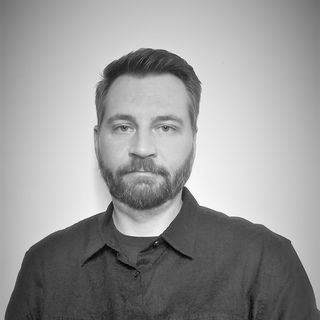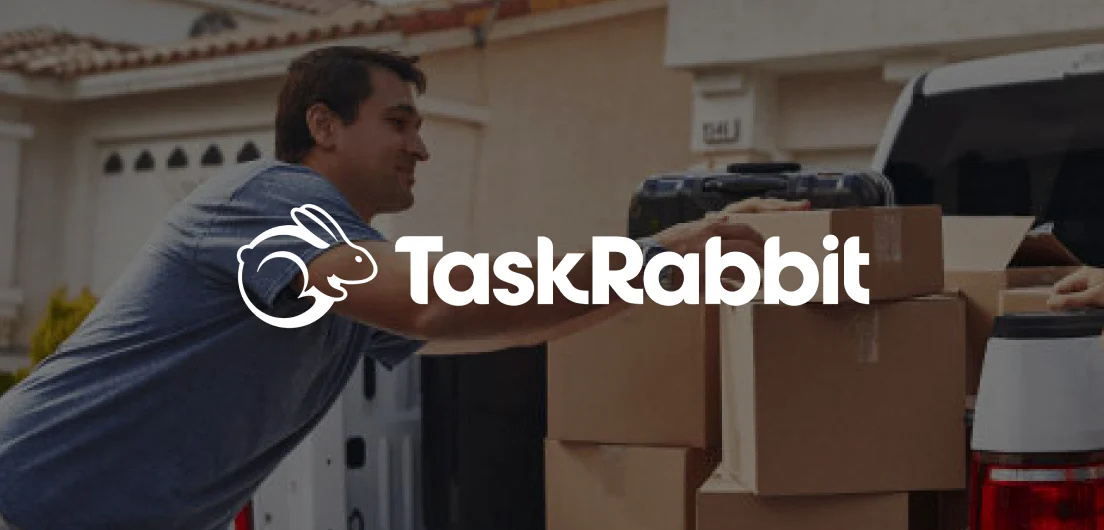You need to hire. We're here to help.
Find and hire top Webflow Designers, fast.
Get matched to 3 highly-qualified Webflow Designers in minutes.
Hire Top Webflow Designers.png)
.png)
.png)
How to hire top Webflow Designers at Braintrust
Post a job
Create an account and publish your job posting free of charge.
Review candidates
Manage and hire top talent instantly.
Get to work
We simplify onboarding, invoicing, compliance, and more.
Meet our Webflow Designer community
Braintrust is a user-owned talent platform created by and for the world’s top talent. This includes a talented network of experienced Webflow Designers available for hire.
Looking for Work

Curtis Lippert
- Figma
- Webflow
Looking for Work

Josh Tucker
- Adobe XD
- Webflow
Looking for Work

Rebecca Suby-Long
- Webflow
How to hire Top Webflow Designers

Overview
Hiring Webflow designers and webflow experts involves a process of identifying and securing a professional with the necessary skills and experience to meet your specific website design needs. This entails evaluating proficiency in Webflow, reviewing design portfolios, assessing knowledge of responsive design and SEO, as well as considering coding skills, communication abilities, industry experience, and project management capabilities. However, the nature of your organization and the structure of employment also play a significant role in the hiring process.
At a startup, a Webflow developer might need to take on a broader set of responsibilities given the lean nature of such organizations. They might be required to handle everything from the initial design concept to project completion, and potentially even ongoing maintenance. Given this breadth of duties, it's crucial for startups to hire designers with a wide range of skills, including coding and SEO, and strong project management capabilities.
In contrast, a larger company might have more specialized roles, allowing a designer to focus more specifically on the design aspect. In such organizations, there could be other team members who handle SEO or coding. Therefore, larger companies may prioritize designers with a strong creative portfolio and advanced Webflow design skills. Experience with templates, particularly from platforms like Wordpress, can be a valuable asset, as it demonstrates versatility and adaptability.
The decision to hire a designer full-time or hourly will depend on the scale and duration of your project. Full-time designers are a great fit for long-term, complex projects or when you need someone who can continually iterate and maintain your website over time. Hiring full-time also promotes deeper integration with your company culture and processes, which can lead to more cohesive and consistent work.
On the other hand, if you have a one-off project or need occasional updates or redesigns, an hourly or contract-based designer might be a better fit. This can offer more flexibility and potentially lower costs. However, it's essential to clarify expectations regarding availability, communication, and turnaround times with hourly hires to avoid any potential issues.
Whether you're a startup or a larger corporation, and whether you're hiring full-time or hourly, it's crucial to find a Webflow designer whose skills and experience align with your specific needs. By carefully evaluating potential hires against the key criteria and considering the specific requirements of your organization and project, you can secure a Webflow designer who will contribute significantly to the success of your online presence.
Proficiency in Using Webflow
A skilled Webflow designer should have an in-depth understanding of the platform's robust tools and capabilities, such as CMS collections, CSS Grid, flexbox, and interactions. They should be adept in creating custom layouts, animations, and interactions, and capable of integrating various APIs. Being able to navigate complex features such as Webflow's Designer, Editor, CMS, and Ecommerce setups is crucial. Furthermore, they should be well-versed in using Webflow's symbol and style manager for design consistency, and know how to use backup points and version history for site recovery. Experience with Webflow hosting setup, DNS settings, site publishing and exporting, and custom domain setup are other technical aspects that can prove beneficial.
Design Portfolio
A Webflow designer's portfolio should showcase their skills, creativity, and versatility. It can provide tangible proof of their ability to translate a client's vision into a functional and visually appealing website. Look for designers whose portfolios exhibit a variety of styles and features, demonstrating adaptability. Make sure their portfolio includes sites built with Webflow to ensure they are comfortable using the platform. Evaluate the user interface, site navigation, color scheme, typography, and other design elements. Furthermore, consider the complexity of the sites they've designed: do they feature eCommerce capabilities, forms, integrations with other platforms, or custom animations?
Understanding of Responsive Design
In a time when users access websites from a wide array of devices, having a site that adapts to different screen sizes is vital. The designer should understand how to use Webflow's breakpoints and layout tools to create a design that adapts to different screen sizes. They should be proficient in using relative units (like percentages or VW/VH), flexbox, and CSS grid, which are fundamental to responsive design. The designer should also have a deep understanding of user interface (UI) and user experience (UX) design principles, and the ability to apply these principles to create an intuitive, easy-to-navigate website across all devices.
SEO Knowledge
A well-designed website is of little use if it can't be found by your target audience. That's why understanding SEO best practices is crucial. The designer should know how to implement metadata (like title tags, meta descriptions, alt text, etc.), create SEO-friendly URLs, and leverage Webflow's built-in SEO tools. They should understand how website design influences SEO, such as site speed, mobile optimization, and user experience. Familiarity with schema markup and the ability to create an XML sitemap in Webflow are also valuable skills. They should also be able to perform SEO audits, implement keyword research, and maintain an understanding of current SEO trends and updates.
Coding Skills
While Webflow is known for its no-code capabilities, having basic coding skills can take a designer's work to the next level. Basic understanding of HTML can help when structuring the content correctly, while CSS knowledge can enhance the site's aesthetics, allowing for unique styles that might not be achievable directly through Webflow's interface. A designer comfortable with JavaScript and jQuery can implement more advanced interactive features, improving user experience. Moreover, knowledge of Webflow's custom code embed feature would be a plus, allowing the designer to integrate third-party scripts and APIs, thereby enhancing the functionality of the site beyond Webflow's built-in features.
Communication Skills
Effective communication is fundamental to ensuring a successful project outcome. The designer should be proficient in translating your vision and objectives into a practical and appealing design. They should be adept at articulating their design decisions and explaining complex technical concepts in layman's terms. Tools like Slack, email, or project management software can facilitate this communication. Moreover, designers who can provide regular updates and respond promptly to feedback are often more effective at managing client expectations and keeping the project on track.
Experience in Your Industry
Industry-specific experience can add substantial value to your project. A designer with familiarity in your field will understand the industry standards, trends, user behavior, and competitor landscape. This can streamline the design process and potentially yield better results. They should be able to demonstrate prior work in your industry or similar sectors. Furthermore, designers who have experience in your industry are often better equipped to understand and fulfill regulatory requirements and handle industry-specific tools or integrations.
Project Management Skills
Effective project management is key to ensuring that your website design project is completed on time and within budget. A good designer will know how to manage their time, prioritize tasks, and make efficient use of resources. Experience with project management tools such as Trello, Asana, or Monday can be an advantage. Also, look for signs of the ability to estimate realistic timelines, delegate tasks if they work in a team, and consistently meet project milestones. They should be able to set clear expectations, handle unexpected setbacks or changes in scope, and maintain quality throughout the project lifecycle.
Expert Resources for Hiring Webflow Designers
Frequently Asked Questions
How much does it cost to hire a Webflow Designer?
The cost to hire a Webflow designer can vary widely based on factors such as the complexity and scope of your project, the designer's experience and skill level, and your location. Freelance Webflow designers may charge anywhere from $25 to $200 per hour. For project-based pricing, a simple Webflow website could start at a few hundred dollars, while a complex site with numerous pages and custom features could run into the thousands. Hiring a full-time Webflow designer might have an annual salary ranging from $40,000 to over $100,000 depending on their experience level and the cost of living in your area.
Where can I hire a Webflow Designer?
There are many places to find talented Webflow designers. Webflow's own Designer Directory is a great place to start; it allows you to browse profiles of designers with proven Webflow expertise. Freelance platforms like Braintrust also host numerous Webflow designers. LinkedIn can be a useful resource as well, and there are various design-focused job boards such as Behance, Dribbble, and DesignHill. It can also be beneficial to engage with the Webflow community on forums and social media, as this can lead to personal recommendations.
How do I recruit a Webflow Designer?
Recruiting a high-quality Webflow designer involves clearly defining your project needs, sourcing potential candidates, reviewing their portfolios, and conducting interviews. Start by outlining the development services that you need in terms of design, functionality, and deadline. Post your job on relevant platforms such as LinkedIn, job boards, and freelance sites. When reviewing portfolios, look for proof of Webflow proficiency, design style, and a track record of completed projects. During interviews, assess their communication skills, understanding of your industry, and ability to handle potential challenges. Finally, consider conducting a small, paid test project to evaluate their skills in a practical setting.
How much does a Webflow Designer charge per hour?
The hourly rate for a front-tnd Webflow designer can vary widely based on their years of experience, the complexity of the work, and geographical location. A beginner or intermediate designer might charge anywhere from $25 to $75 per hour. A more experienced designer or a specialist with advanced Webflow skills might charge $100 to $200 or more per hour. It's important to remember that while cost is a significant factor, it should be weighed against the designer's portfolio, skills, and the potential value they can bring to your project.
Is Webflow in demand?
Yes, Webflow is indeed in demand. The demand for Webflow has been increasing as more businesses recognize its potential for creating robust, visually appealing, and highly customized websites without extensive coding. It's particularly popular among startups, small businesses, and freelancers due to its versatility and cost-effectiveness. Given that Webflow continues to introduce new features and improve its platform, the demand for skilled Webflow designers is expected to remain strong.
Does Webflow need coding?
Webflow is designed to allow designers to build custom websites without needing to write code. It offers a visual interface where you can design the layout, style elements, set up a CMS, create interactions, and more. However, understanding basic HTML, CSS, and JavaScript can be beneficial for more complex or unique features. Experience with tools like Figma for UI design can also be very valuable. Webflow allows for custom code insertion, which means you can add custom functionality or styles that go beyond the built-in capabilities of the platform. So while coding is not necessary for most design tasks in Webflow, it can expand your possibilities and take your designs to the next level.
How do I become a Webflow designer?
Becoming a Webflow designer requires learning and mastering the Webflow platform. Start by familiarizing yourself with the basics of web design, including understanding UI/UX principles, responsive design, and fundamental SEO best practices. Next, delve into the specifics of the Webflow platform. Webflow provides numerous resources for learning, including their University, blog, and forum. Practice designing Webflow sites, starting with simpler projects and gradually moving onto more complex designs. Building a portfolio showcasing your Webflow projects and landing pages is crucial for attracting clients or employers. It's also helpful to learn some HTML, CSS, front-end ux-design, and JavaScript for situations where custom code is necessary. Networking within the Webflow community and continuous learning to stay up-to-date with platform updates and advancements will also aid your development as a Webflow designer.
Can I be a web designer with Webflow?
Absolutely. Webflow is a powerful tool for web design that allows you to create custom, professional Webflow websites without needing to write code or follow traditional website development processes. Its visual interface lets designers create and control layout, typography, colors, and interactions. With its advanced capabilities such as the CMS, Ecommerce, and Interactions, you can design various types of websites from blogs to online stores. It's also equipped with responsive design tools to ensure your sites look great on any device. Even if you're a beginner, Webflow's extensive educational resources can help you learn the ropes.
Get matched with Top Webflow Designers instantly 🥳
Hire Top Webflow Designers


.webp)

.webp)



.png)